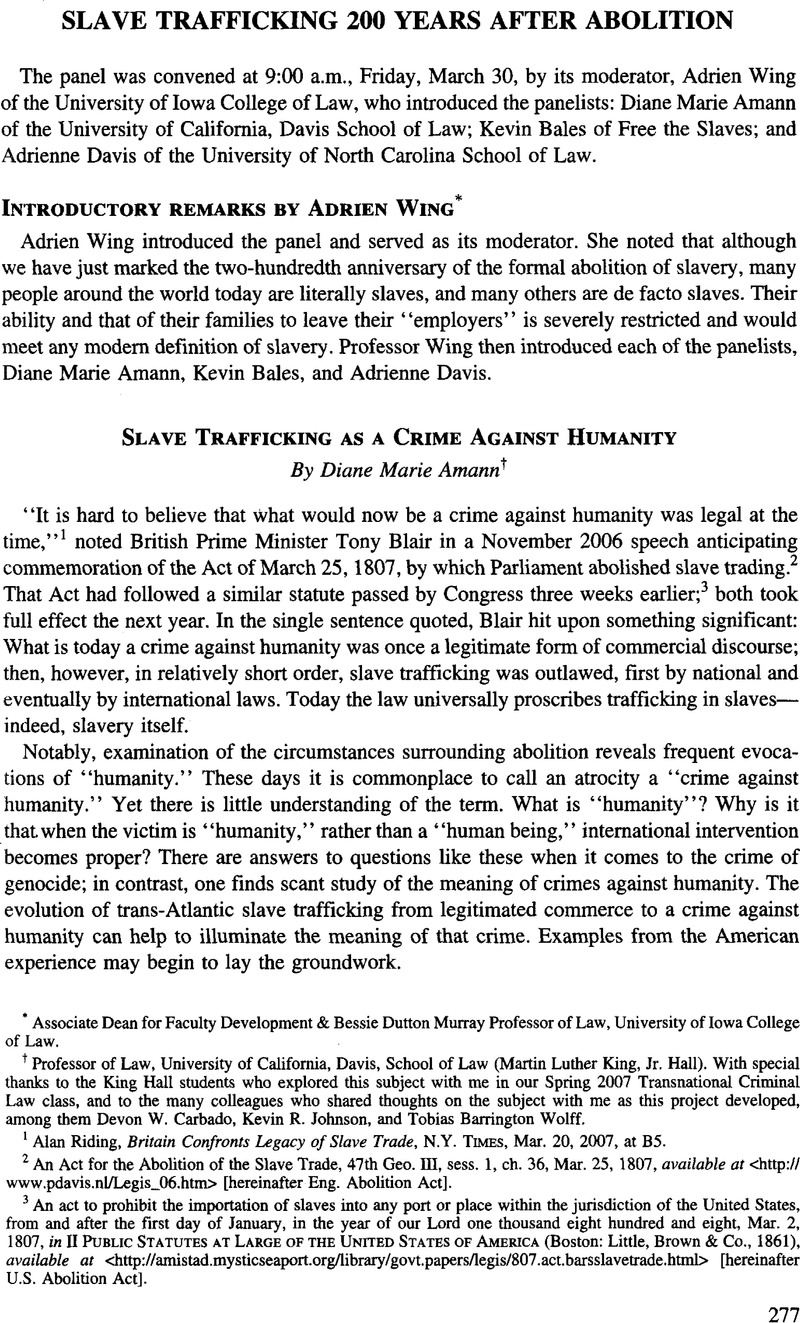No CrossRef data available.
Published online by Cambridge University Press: 28 February 2017

1 Alan Riding, Britain Confronts Legacy of Slave Trade, N.Y. Times, Mar. 20, 2007, at B5.
2 An Act for the Abolition of the Slave Trade, 47th Geo. III, sess. 1, ch. 36, Mar. 25, 1807, available at <http://www.pdavis.nl/Legis_06.htm [hereinafter Eng. Abolition Act].
3 An act to prohibit the importation of slaves into any port or place within the jurisdiction of the United States, from and after the first day of January, in the year of our Lord one thousand eight hundred and eight, Mar. 2, 1807, in II Public Statutes At Large of the United States of America (Boston: Little, Brown & Co., 1861), available at <http://amistad.mysticseaport.org/library/govt.papers/legis/807.act.barsslavetrade.html> [hereinafter U.S. Abolition Act].
4 Paine, Thomas, African Slavery in America, in Selected Writings of Thomas Paine 4-7 (Roberts, Richard Emery ed., 1945)Google Scholar.
5 The Antelope, 23 U.S. (10 Wheat.) 66 (1825).
6 Id. at 114-15.
7 The Amistad, 40 U.S. (15 Pet.) 518 (1841). President, Free the Slaves, Washington DC; Professor Emeritus, Roehampton University, London.